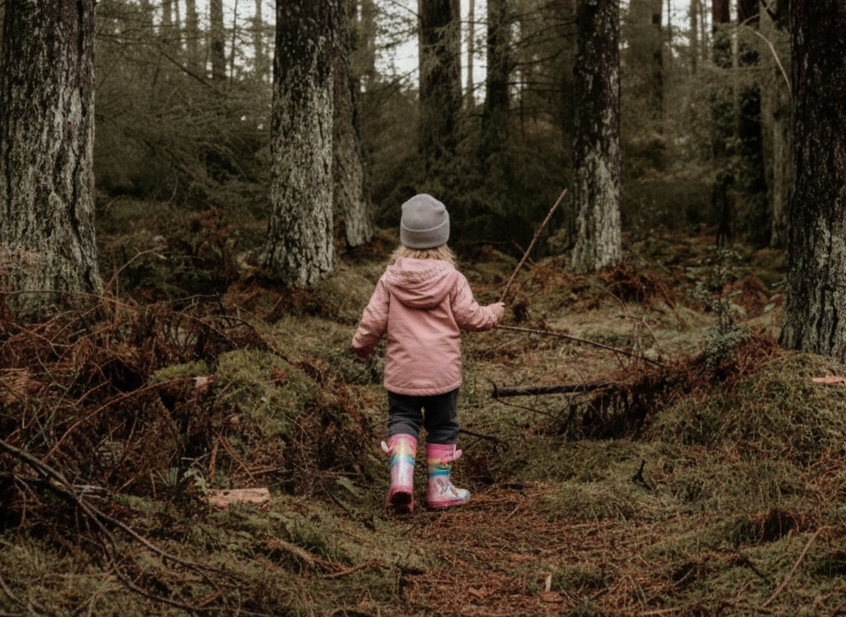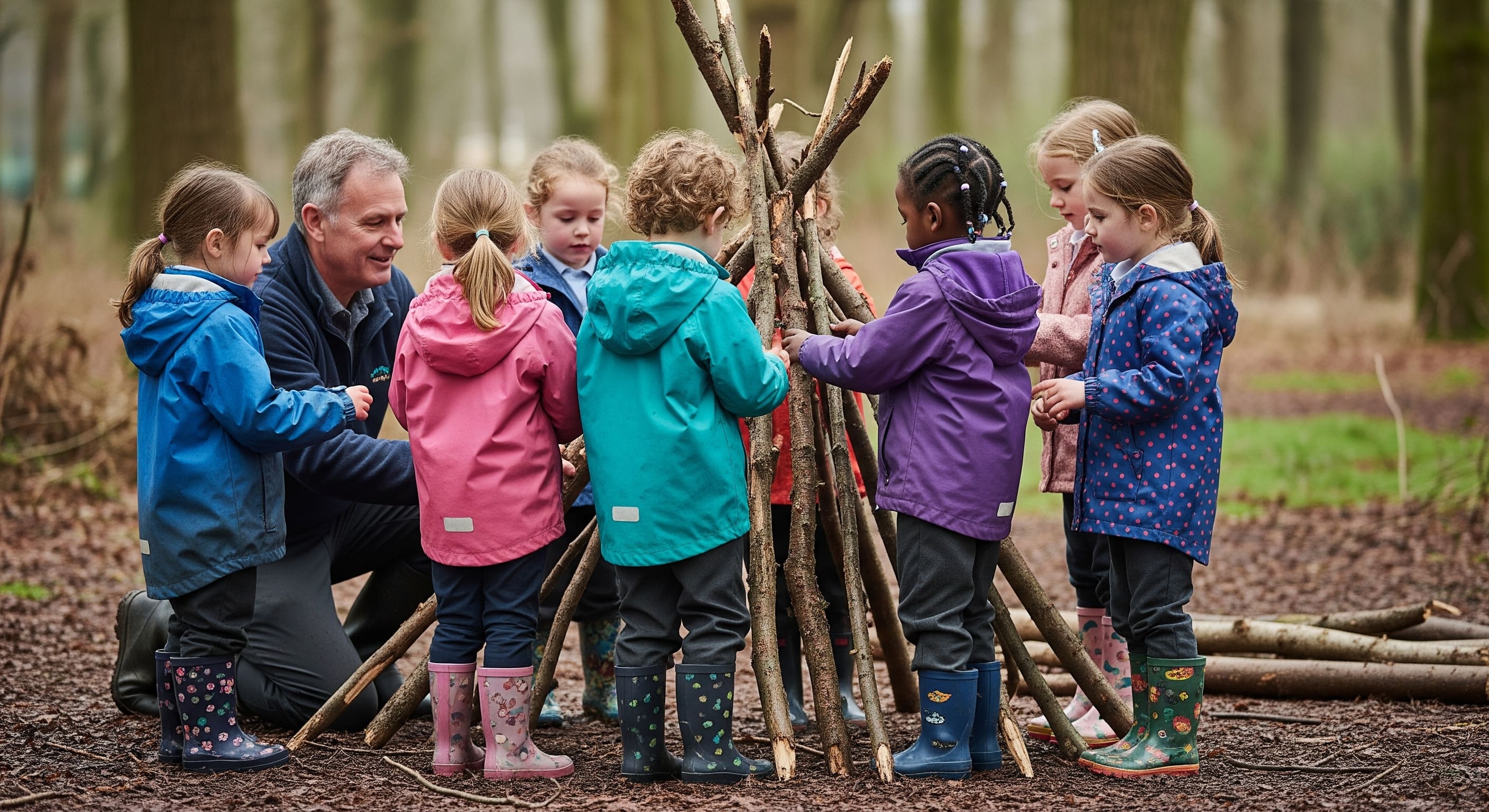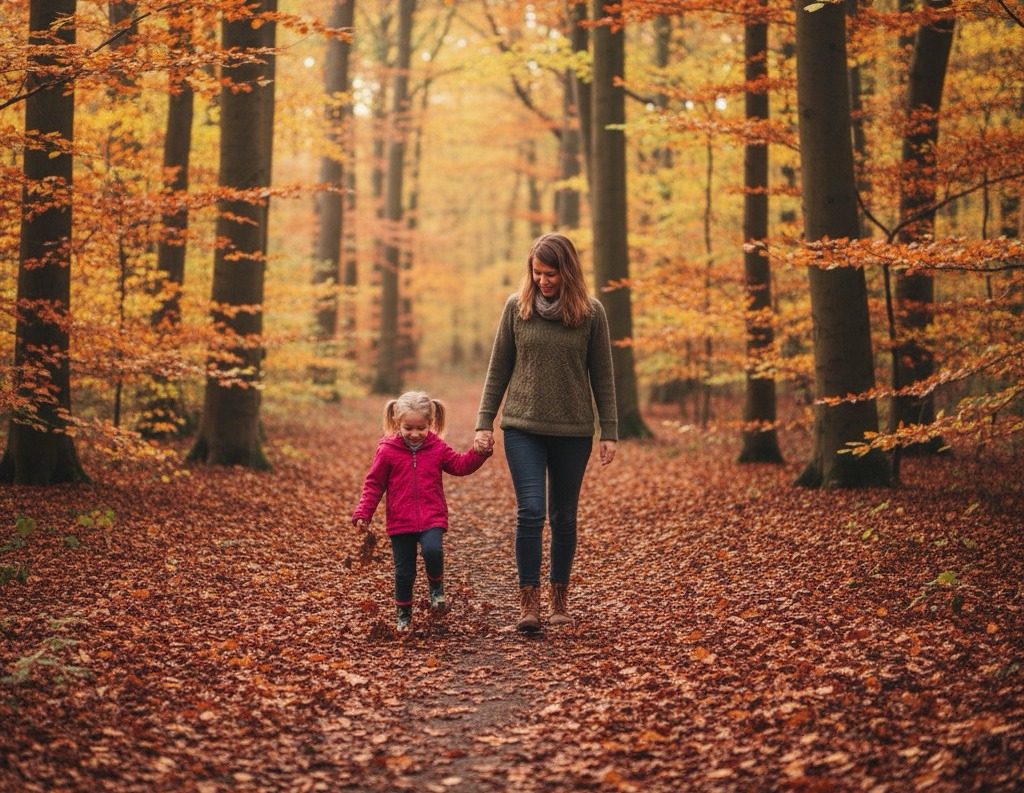· Early Years Education · 5 min read
Forest School or Montessori? Choosing the Right Path for Your Child
Understand the core differences between Forest School and Montessori education. This practical guide for UK parents compares their learning environments, teaching methods, and philosophies to help you decide which approach best suits your child's personality and developmental needs.

Choosing the right early years setting for your child is a significant decision. In the UK, Forest School and the Montessori Method are two popular and distinct approaches. While both champion child-led learning, their environments, materials, and core philosophies differ substantially. This guide breaks down these differences to help you determine which approach aligns best with your child and your family’s values.
What is Forest School?
Forest School is an inspirational, long-term educational process that takes place in a natural, woodland environment. Originating from Scandinavia, its ethos is built on a foundation of trust and freedom to learn through hands-on experience, allowing children to develop a deep and meaningful connection with nature.
- Core Principles: The focus is on holistic development, nurturing resilient, confident, and creative learners. It encourages appropriate risk-taking, problem-solving, and emotional intelligence.
- The Learning Environment: The ‘classroom’ is the outdoors, in all seasons and weathers. This dynamic environment provides endless, ever-changing opportunities for discovery.
- The Role of the Leader: A qualified Forest School leader acts as a facilitator, not a traditional teacher. They observe the children’s interests, introduce skills and tools when appropriate, and maintain a safe space for exploration.
What is the Montessori Method?
The Montessori Method, developed by Dr. Maria Montessori, is a child-centred educational approach based on scientific observations of children. It is most often conducted in a carefully prepared environment designed to foster independence, concentration, and a love of learning.
- Core Principles: The central tenets are respect for the child, the importance of sensitive periods for learning, and self-directed activity. Children are encouraged to learn at their own pace, following their innate curiosity.
- The Learning Environment: The Montessori classroom is a calm, orderly space structured with specific, self-correcting educational materials. These cover practical life, sensorial activities, maths, language, and culture.
- The Role of the Teacher: The teacher, or ‘director’, guides the child towards purposeful activity, demonstrates the use of materials, and then steps back, allowing the child to learn and master tasks independently.
Key Differences at a Glance
This table provides a simple overview of the primary distinctions between the two approaches.
| Feature | Forest School | Montessori School |
|---|---|---|
| Learning Environment | Outdoors, in a natural woodland or park setting. | Indoors, in a specifically prepared classroom. |
| Learning Style | Largely unstructured, play-based, and learner-led. | Structured, child-directed activity within clear parameters. |
| Materials | Natural, open-ended resources (sticks, mud, leaves) and real tools. | Specially designed, self-correcting learning materials. |
| Teacher’s Role | Facilitator and co-explorer. | Guide and director. |
| Key Focus | Resilience, emotional intelligence, teamwork, risk management. | Independence, concentration, self-discipline, academic skills. |
| Group Dynamics | Strong emphasis on collaborative play and group projects. | Primarily individual work, with respect for others’ concentration. |
Where Forest School Stands Out
While both methods offer significant benefits, Forest School has unique strengths, particularly for children who thrive in a less structured, physically active environment. Its core appeal lies in its ability to build character and a profound connection to the natural world.
Key benefits include:
- Building Resilience and Confidence: Overcoming tangible challenges like building a shelter or navigating uneven terrain teaches children to persevere and trust their own abilities.
- Developing Physical Skills: Constant outdoor activity enhances gross and fine motor skills, balance, and physical stamina in a way that indoor settings cannot replicate.
- Improving Mental Wellbeing: The positive impact of nature on mental health is now widely accepted. In the UK, the NHS has formally incorporated social prescribing, which includes hiring link workers to connect patients with nature-based activities to improve wellbeing.
- Fostering Social Collaboration: Many activities, such as den-building or a group nature walk, inherently require children to communicate, negotiate, and work together effectively.
Forest School is often an excellent fit for parents who prioritise their child’s emotional wellbeing, social skills, and love for the outdoors over early formal academic learning.
Conclusion: Choosing the Right Environment for Your Child
Ultimately, there is no ‘better’ option; the best choice depends entirely on your child’s temperament and your educational priorities. The Montessori method provides a calm, predictable environment that allows children to develop deep focus and independence, an excellent foundation for formal schooling. Forest School offers a dynamic, physically engaging experience that builds resilience, creativity, and a vital appreciation for nature.
Consider your child’s personality. Do they thrive on structure and quiet focus, or are they full of energy and happiest when running free outdoors? The best way to decide is often to visit both types of settings. Observing the children and the environment first-hand will help you choose the one where your child will truly flourish.
Frequently Asked Questions (FAQ)
Can a child do both Forest School and Montessori?
Yes. Many nurseries and preschools now offer a blended curriculum, combining the structured indoor learning of Montessori with regular Forest School sessions. This can provide a balanced experience, capturing the benefits of both philosophies.
Is Forest School just about playing outside?
No. While it is play-based, Forest School is a distinct educational pedagogy led by trained professionals. The activities are intentionally designed to support holistic development, with leaders skilfully facilitating learning experiences and managing risks.
Is the Montessori method too rigid for young children?
Although the environment is structured, the learning is child-led. Children have the freedom to choose their activities and work at their own pace. The ‘academic’ materials are designed to be concrete and sensorial, making them accessible and engaging for young learners.
What happens during bad weather at Forest School?
Forest Schools operate on the principle that there is ‘no such thing as bad weather, only unsuitable clothing’. Children are expected to wear appropriate waterproofs and layers. Sessions proceed in most weather, teaching children to be adaptable. The only exception is for conditions that compromise safety, such as high winds or thunderstorms.



